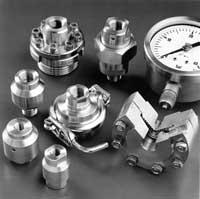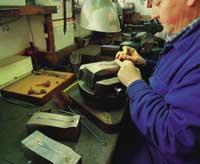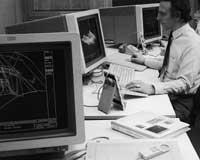Design and competitiveness
Historical perspective
In the 1960s, industry growth was rapid, but this was not selective. Competitiveness was based on two factors: on the one hand, low labour costs and, on the other, government tariffs.
In the 1970s there was an oil crisis. While the neighboring states faced the crisis, Spain considered it to be conjunctural and delayed the necessary changes. Profound changes took place at the social and political level.

In 1985 Spain joined the European Economic Union and the market increased, but with it competition between nations on equal terms sharpened that market. Therefore, a remodeling of the industrial structure has been necessary. On that road many small businesses have had to close their doors or have fallen into the clutches of multinationals.
Currently, basing competitiveness on labour costs is not a direct route, which should be evident for companies. In general, innovation is the only way and, although it can be dangerous, it is more dangerous not to attend to innovation.
Company Mission
Our society has believed that the mission of the company is to earn money. If no one discusses (except public companies that provide social or strategic services) that long-term survival is impossible without economic benefits, the company's mission should be to create and maintain new customers. The consequences of a set of customers are economic benefits, but for this it is necessary to know how to capture and keep satisfied customers.
On the other hand, the company should not be considered as a product manufacturing organization but as a process of consumer satisfaction. The customer does not buy the product but the hope of profit.
Currently the product offer is very wide and the same happens with a single product, many companies offer the same product or very similar. The consumer will choose the product based on its added value, that is, the different characteristics that it will acquire with the product:
- quality or characteristics that the customer considers: performance, duration, aesthetics, innovation, etc.
- cost or sacrifice requested from the client: price, time, risk, etc.
- service or features given to the customer: training, after-sales service, etc.
If the company assigns an added value to the product, the consumer will be satisfied and the benefits will surely be obtained. That is why the product is so important, since the customer will buy the product of greater added value.
Product Features
Taking into account social and economic development, products are required a number of specificities:
- High pace of innovation: although the improvements are small, it is necessary to try their invention and implementation without forgetting product innovation or long-term changes.
- diversified products in function and use.
- Changing the relationship of products and services: often the sale of a product is a after-sales service that must be taken into account.
Technological advancement makes the technical possibilities of product creation increasingly better:
- new materials and new elements such as electronics can be used.
- new design methods: CAD system, simulation, etc.
- software for combining different elements.

Although the customer requests a personal product, standardization is highly recommended, combining different elements to create new variants. In this sense, planning the evolution of the product in the initial design will facilitate subsequent changes facilitating commercial success.
Due to the size of the project or the intrinsic difficulty of the necessary technical elements, the difficulty can be considered associated with the product project. Therefore, the most advanced work methodologies and multidisciplinary work teams are necessary.
On the other hand, if a company does not have the property of the manufactured product, it depends on its owner and, ultimately, it is a production center. Thus, when the owner of the product considers that the conditions are better elsewhere, he will move the production plant or make available to another the manufacturing license of the product.
On the contrary, if each has its own product, it will have decision-making capacity. Somehow, it is a guarantor of the future of the product.
Design tools
The design consists of selecting and applying one or more technical solutions. The technical solution is one of the alternatives to solve the problems of the designer. The set of technical solutions constitutes the knowledge base of the company, its richest heritage. Many times this knowledge is only in the designer's mind, but he may be wrong or change his business.

Systematic design is essential to avoid mistakes and forgetfulness and to ensure that all knowledge is present in the company. In the process of systematization design tools have been invented that can be of two types:
- Methodological. The search method for technical solutions will follow the following steps:
- analysis: analysis of problems and technical solutions, standards, building elements, etc. the step to identify.
- structuring process: constraints between selected technical solutions, conformities, etc. Analysis and step to the definition of design threads.
- cleaning: errors, improvement opportunities, etc. to analyze.
All steps must be systematized for the optimization of the design process. For this systematization there are different design tools: Methodological Analysis of Conclusions and Defects, Design for Manufacture and Assembly, Design Manuals, etc.
- Materials. Computer technology offers us mainly material resources. The best known are CAD systems, databases, expert systems and programming languages, among others. While these devices facilitate and improve work, they are only a useful or a tool and if they are not well programmed, their performance will be largely lost. Therefore, before applying these materials it is necessary to structure and configure the design process.
Planning new products

The life of a product is getting shorter, as the needs and desires of people are constantly changing and taking advantage of the new technologies that come out, cost advantages and higher quality products can be achieved. Therefore, the timeframe for a new product or a product reform must be shorter and shorter: the shorter the timeframe, the greater the likelihood of getting ahead of the competition.
In recent years we have the philosophy of Joint Engineering. According to this philosophy, different working groups (production, manufacturing, marketing) will work parallel and not consecutive. Then bug fixes and changes in general take place beforehand, increasing quality and reducing costs and deadlines.
The path is design and innovation so as not to retreat into the race of competitiveness and to follow that path all the members of the company must be involved.





